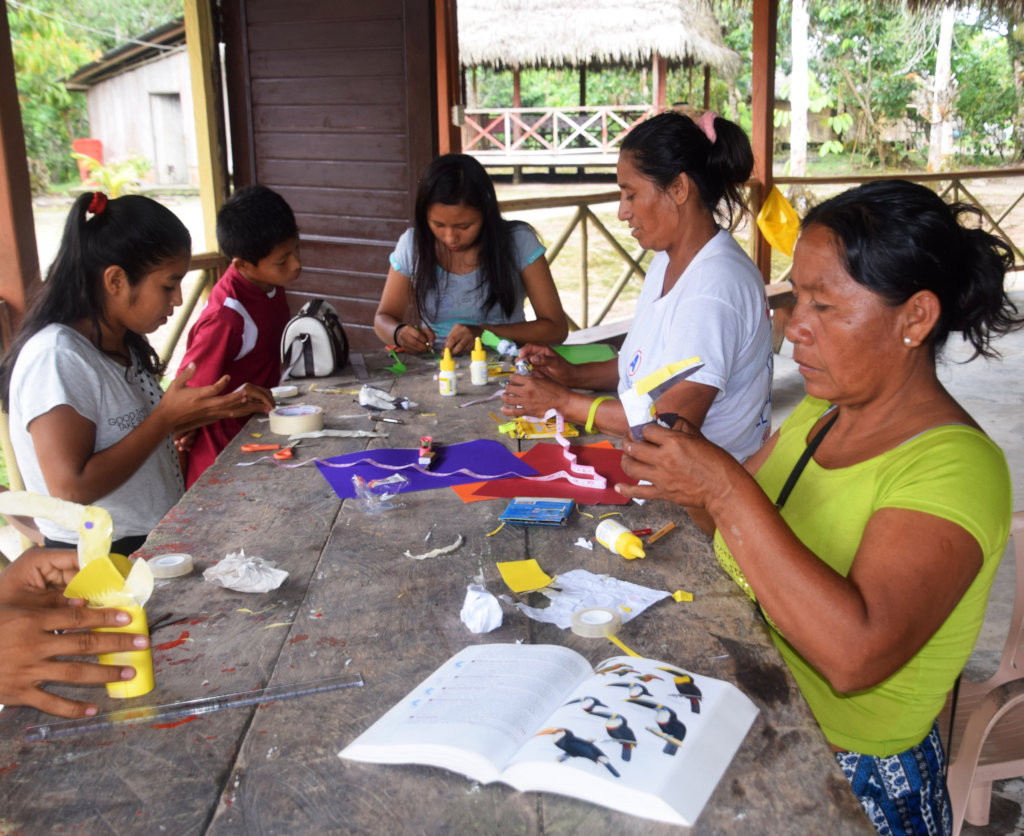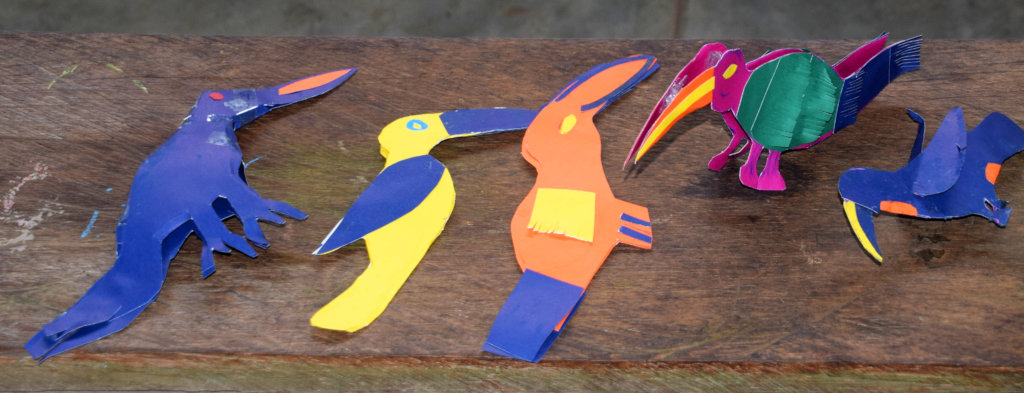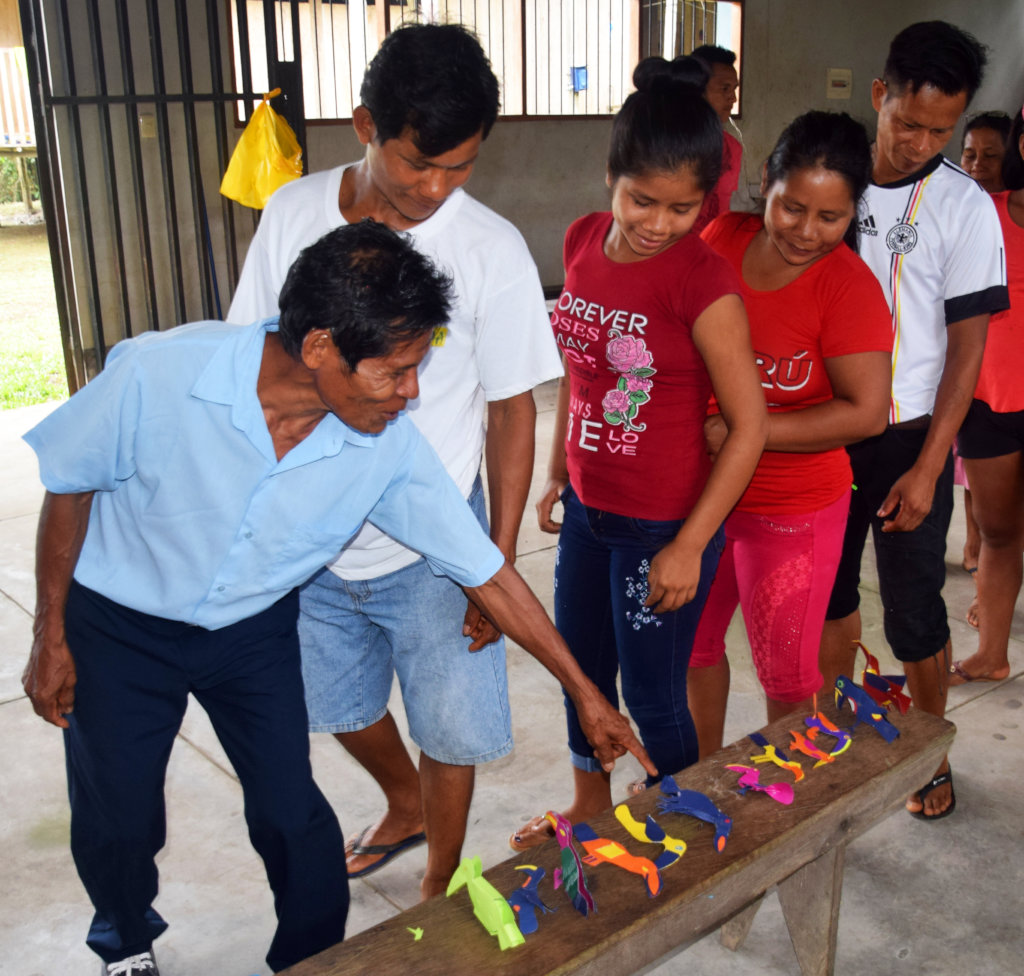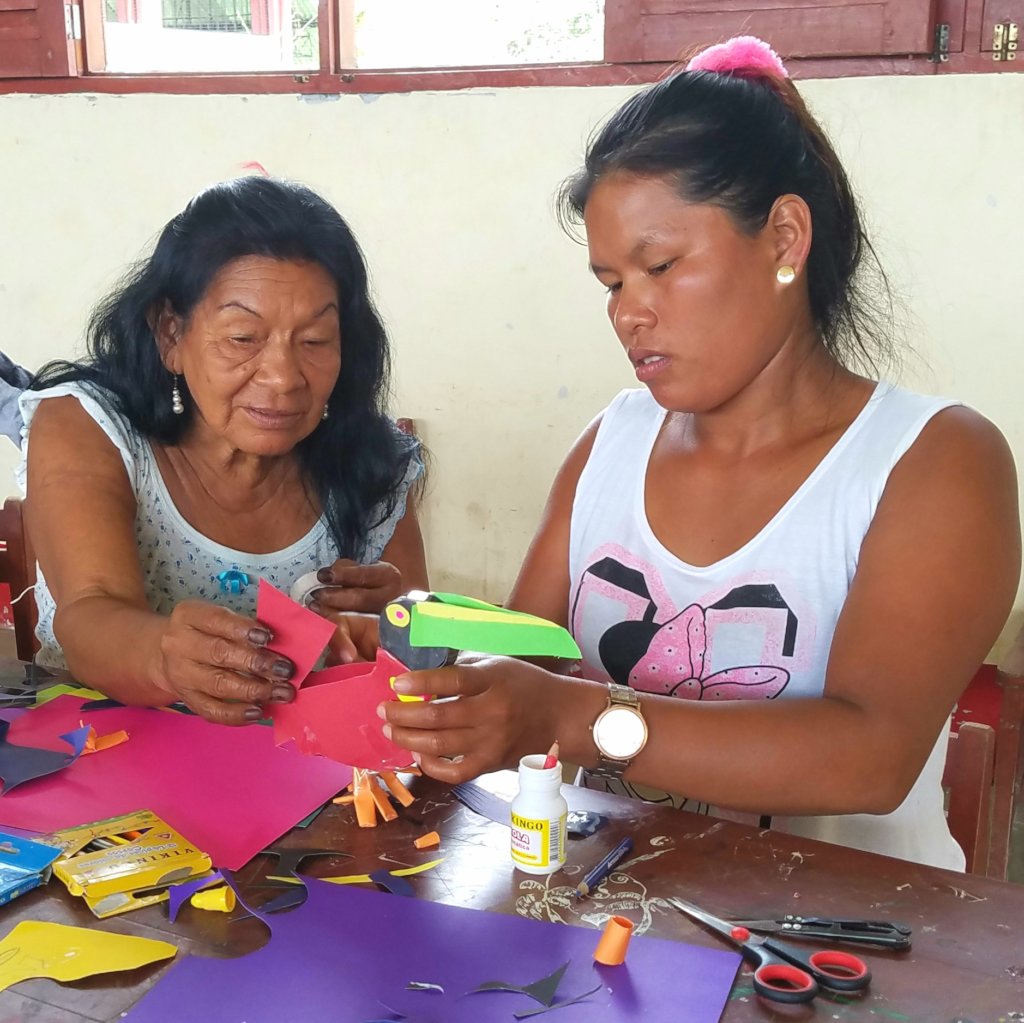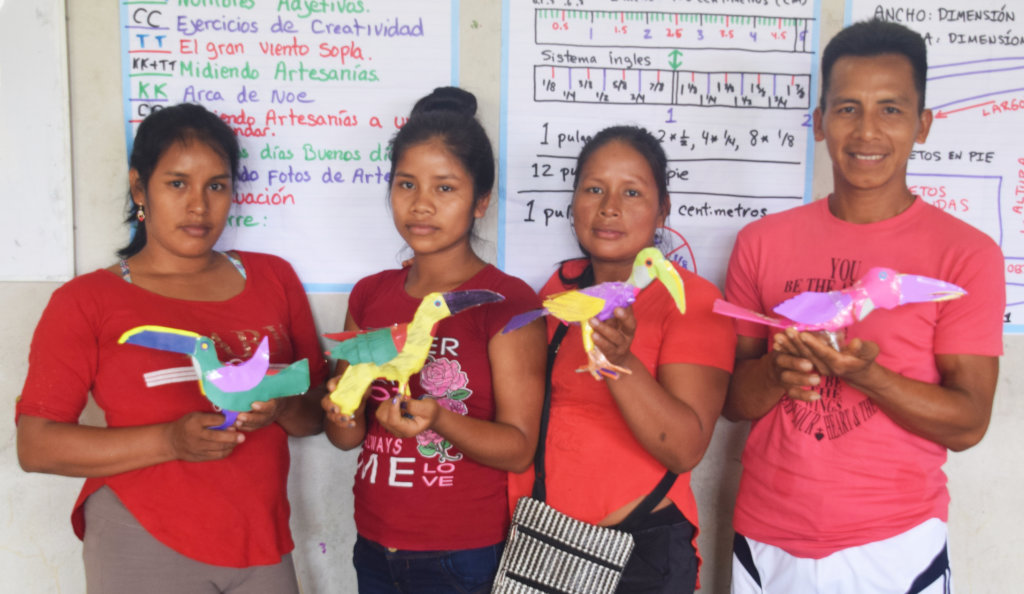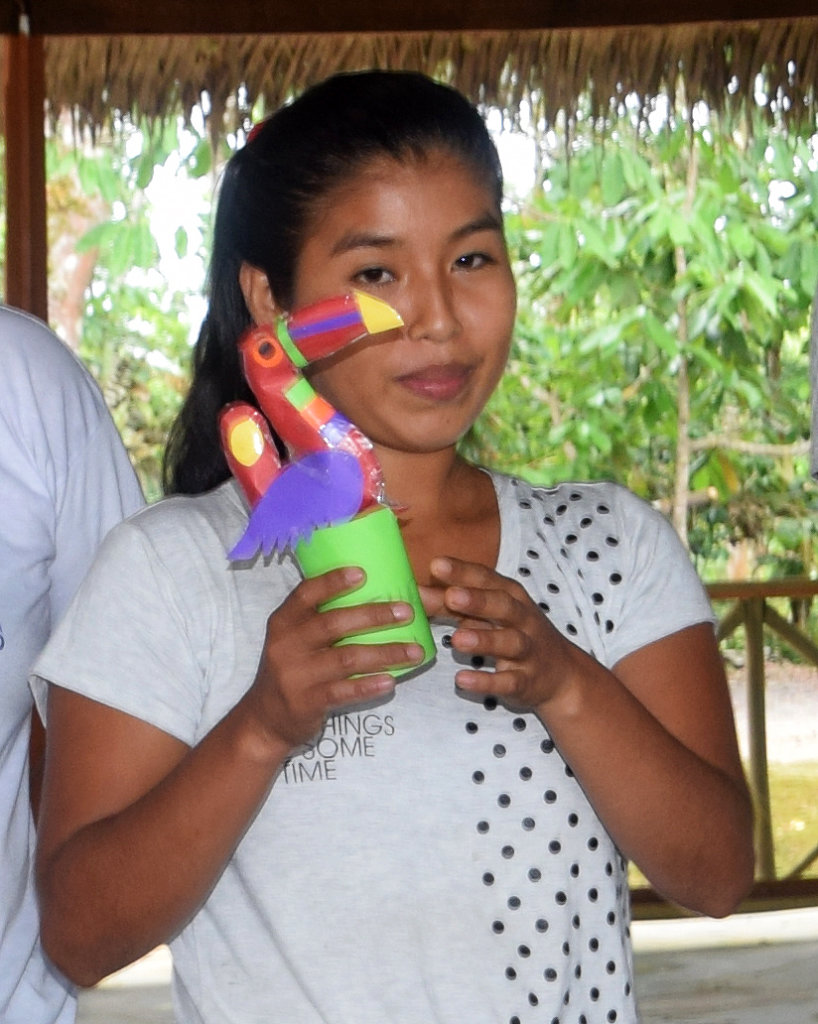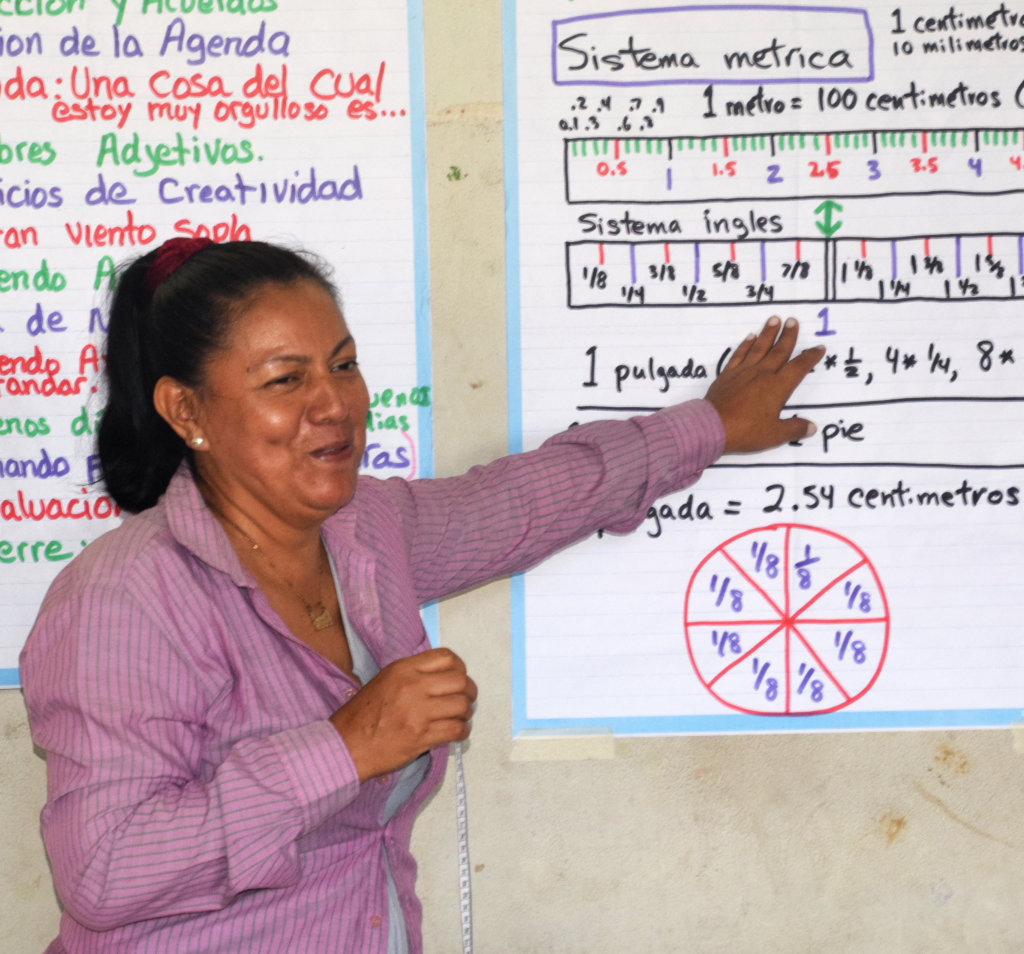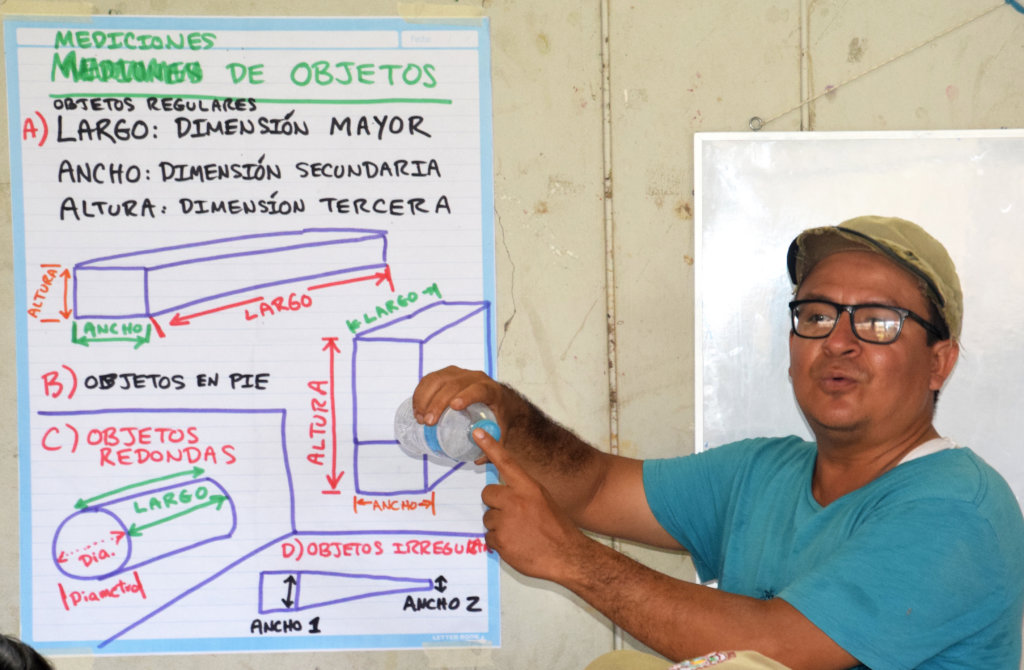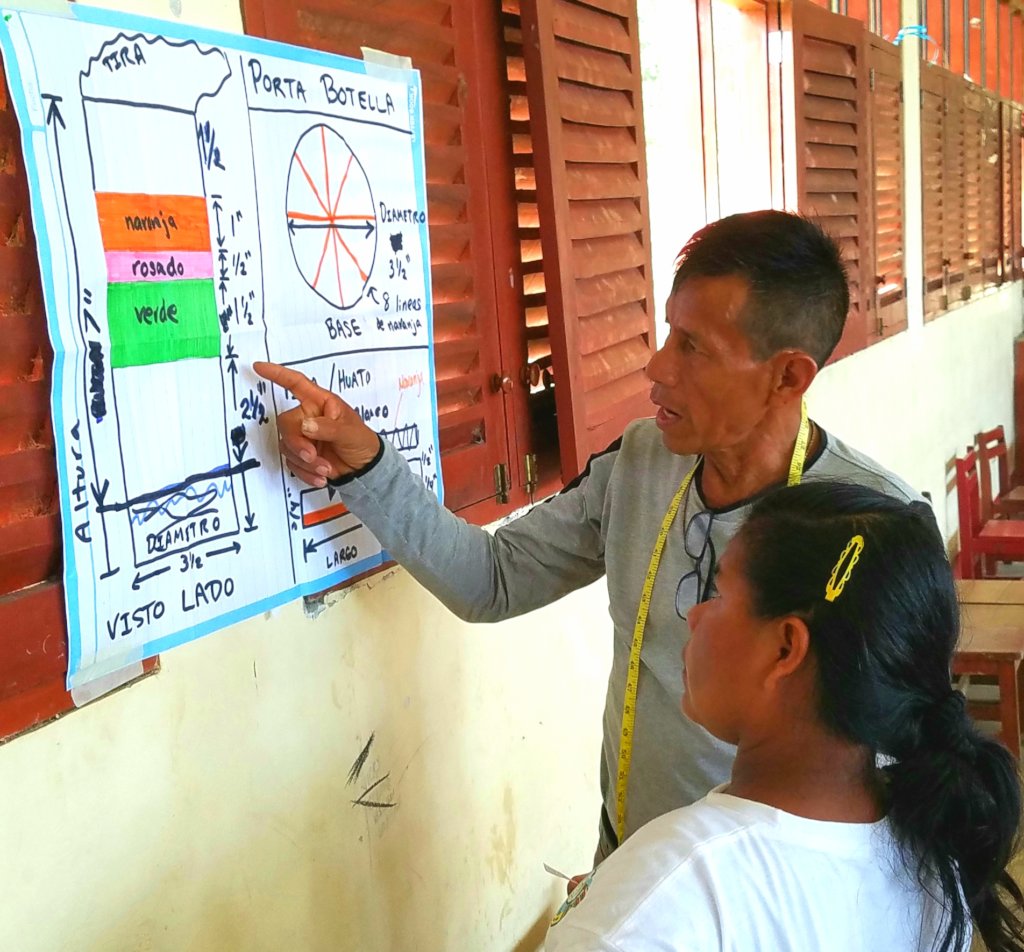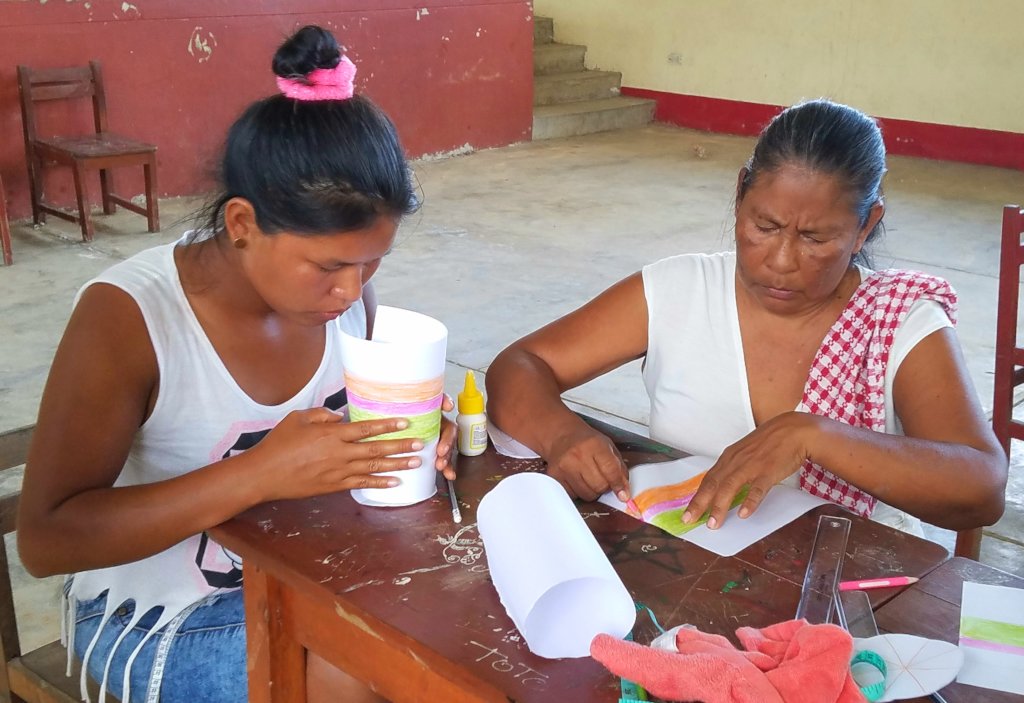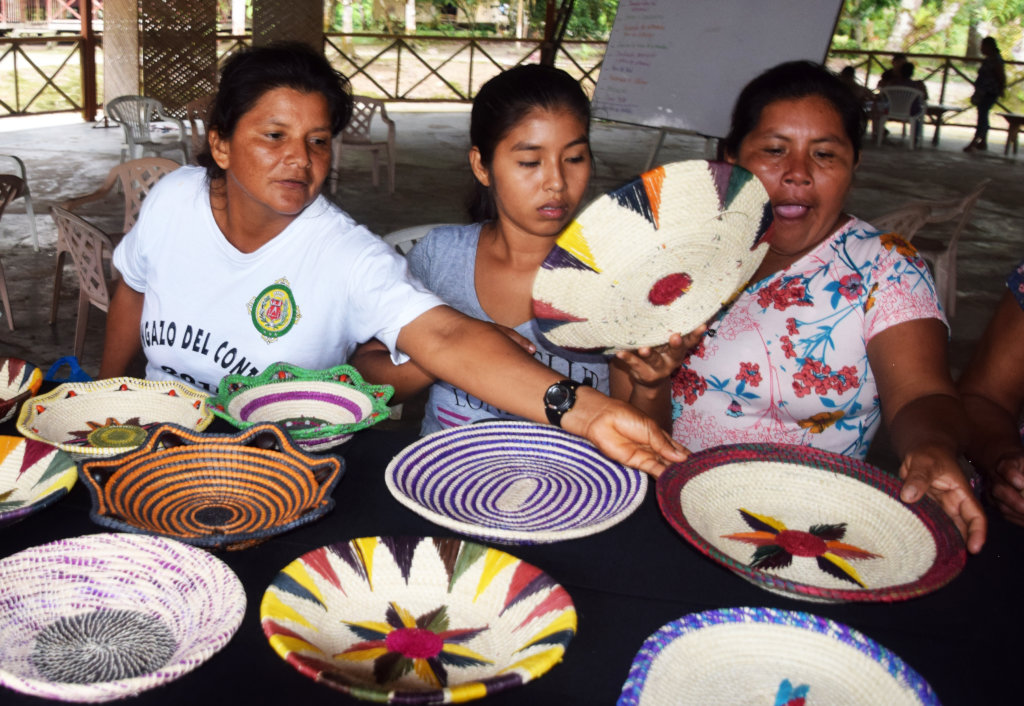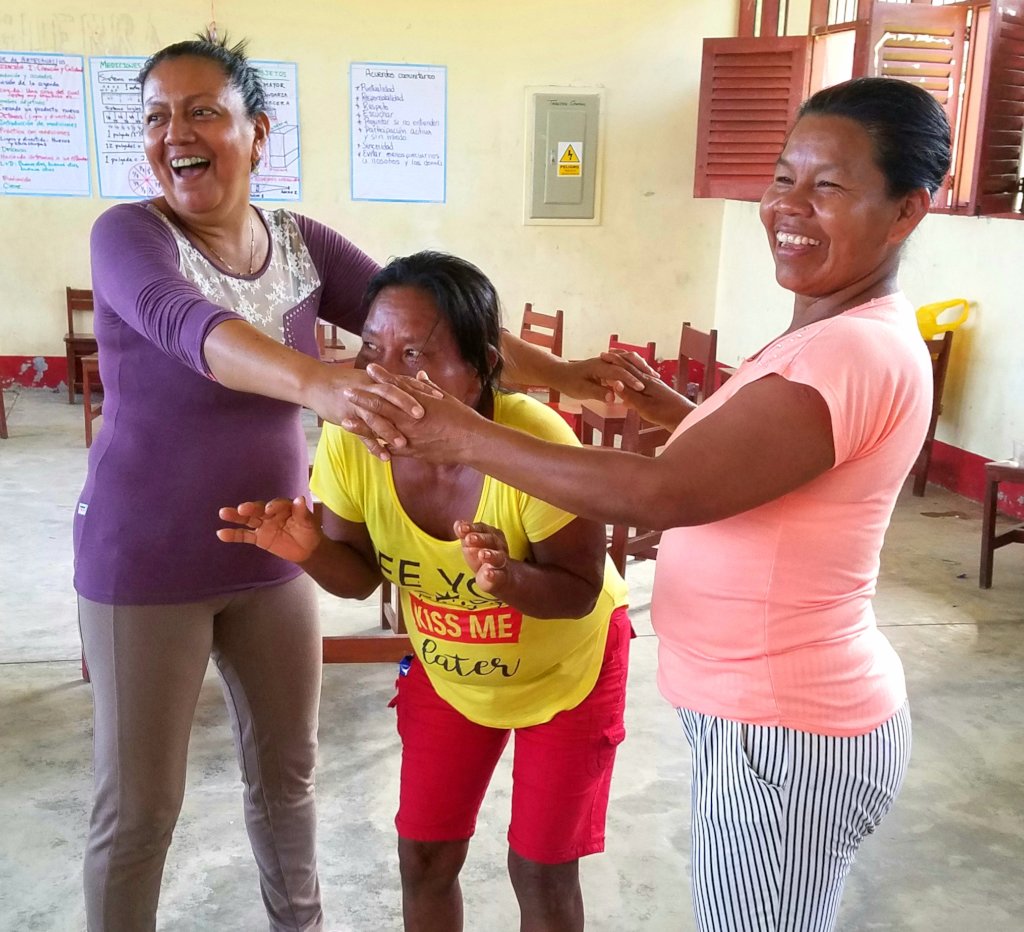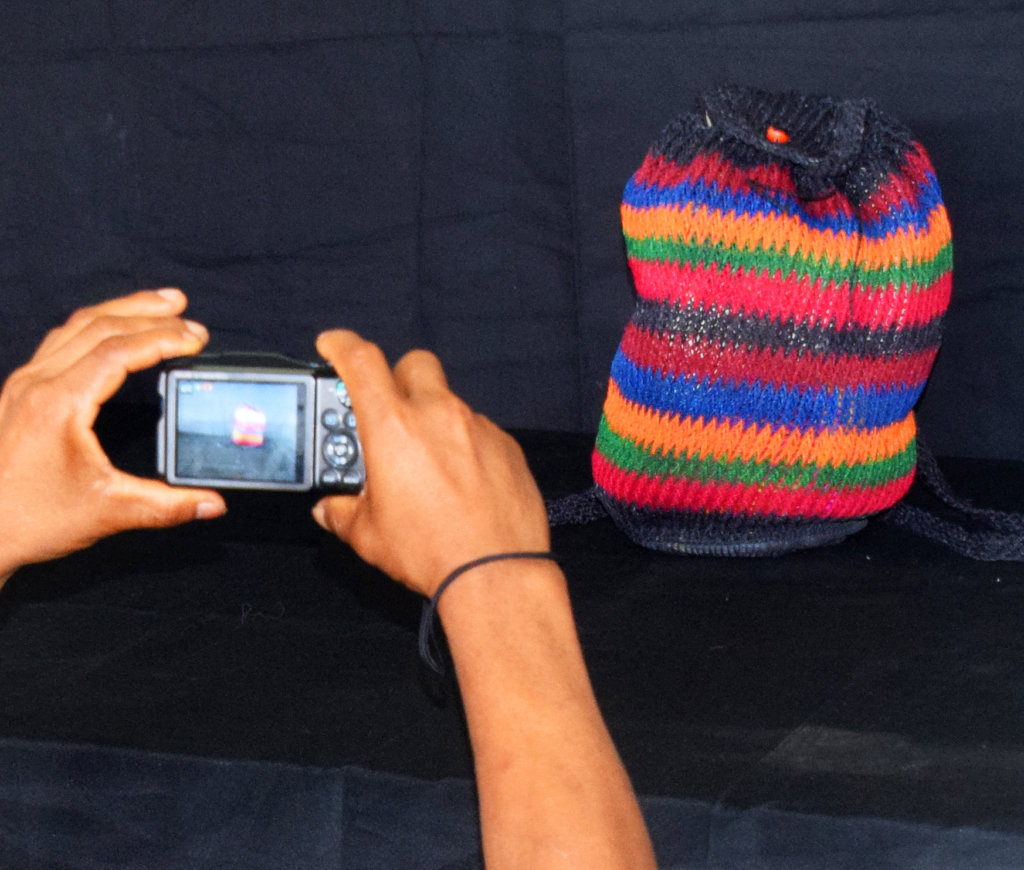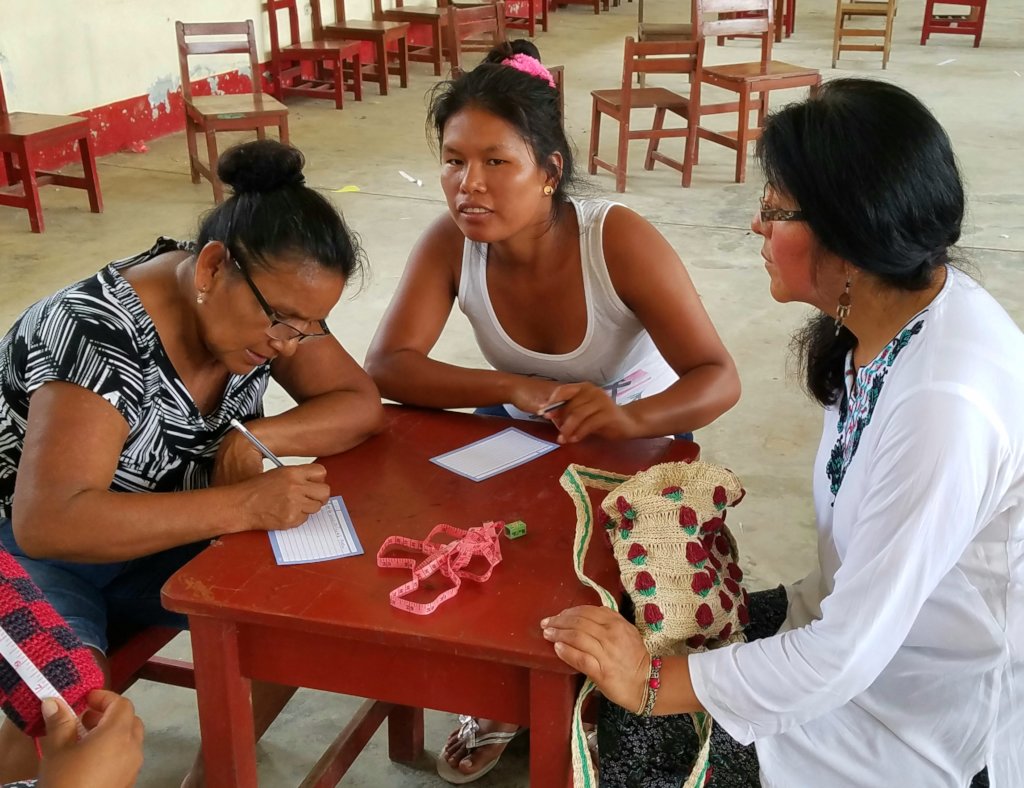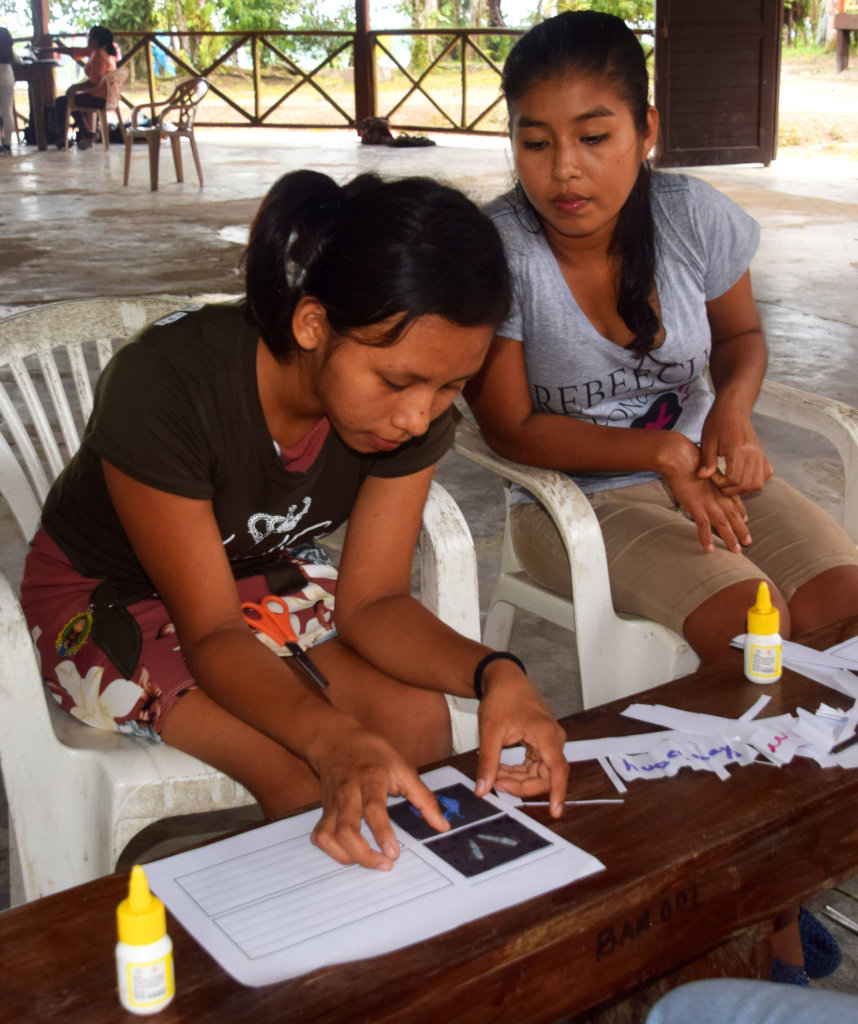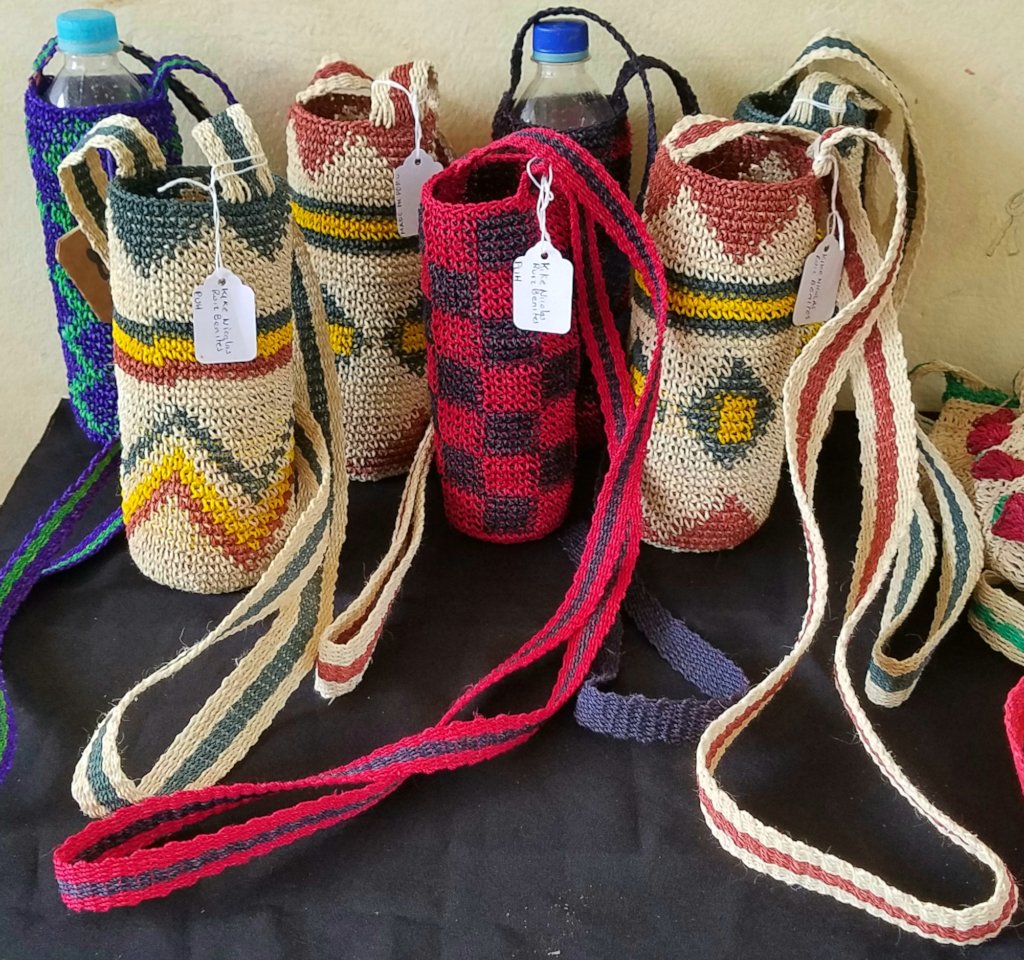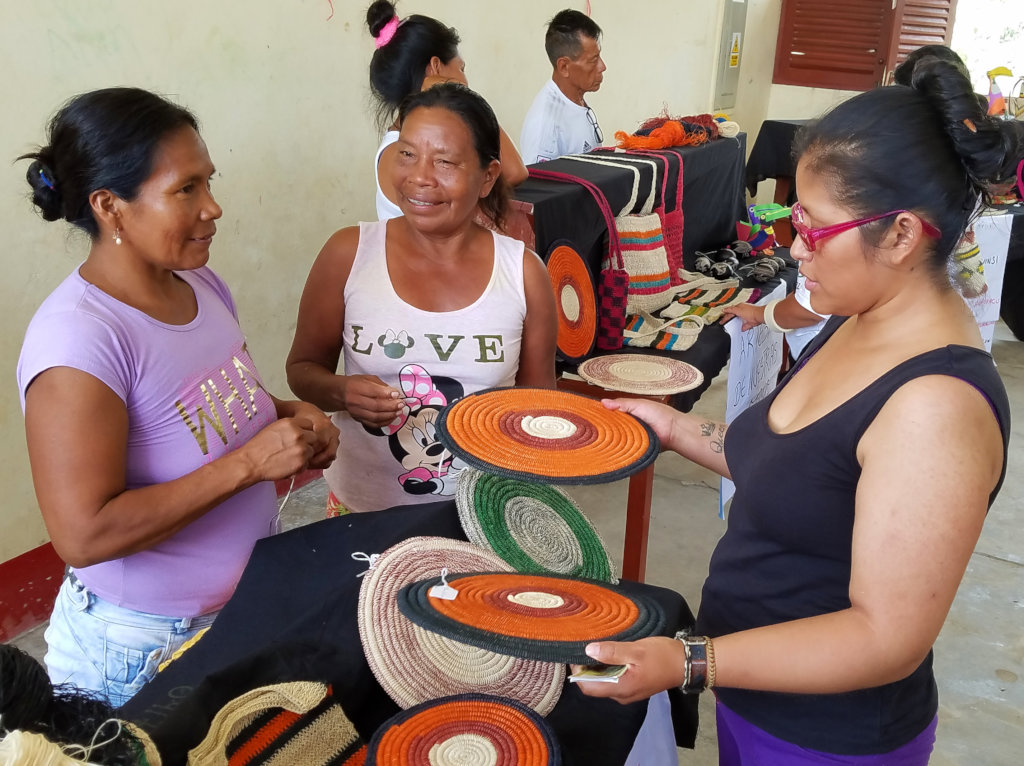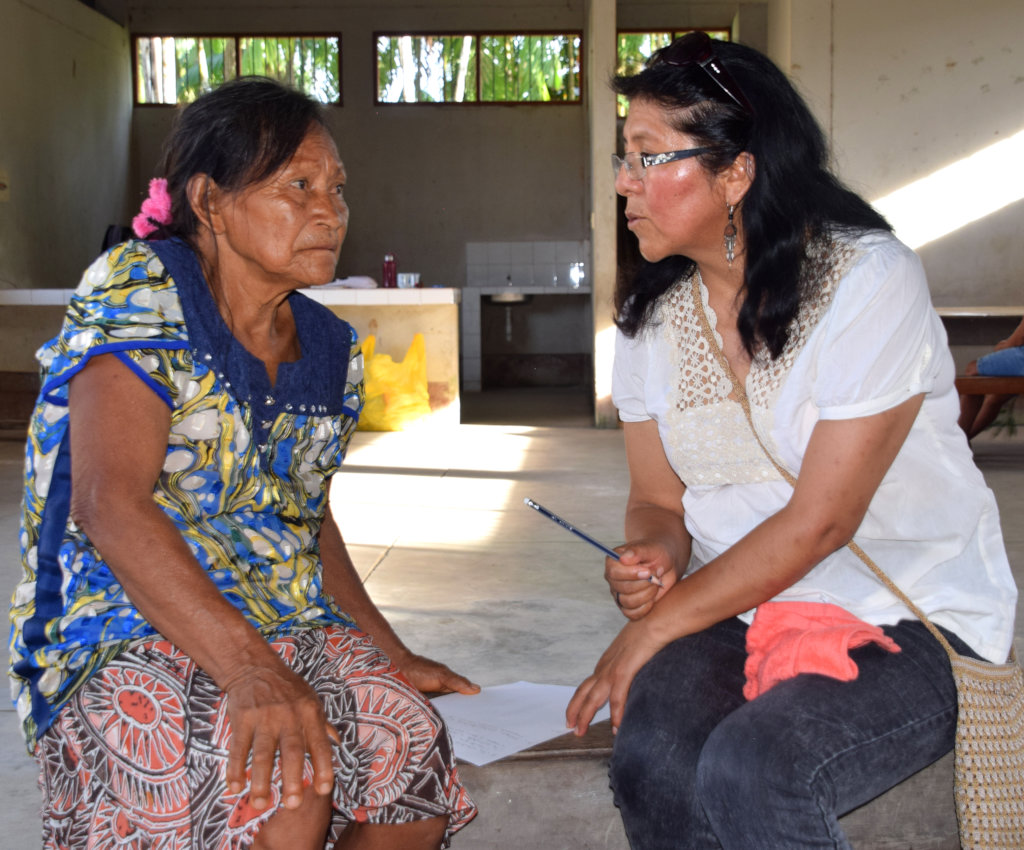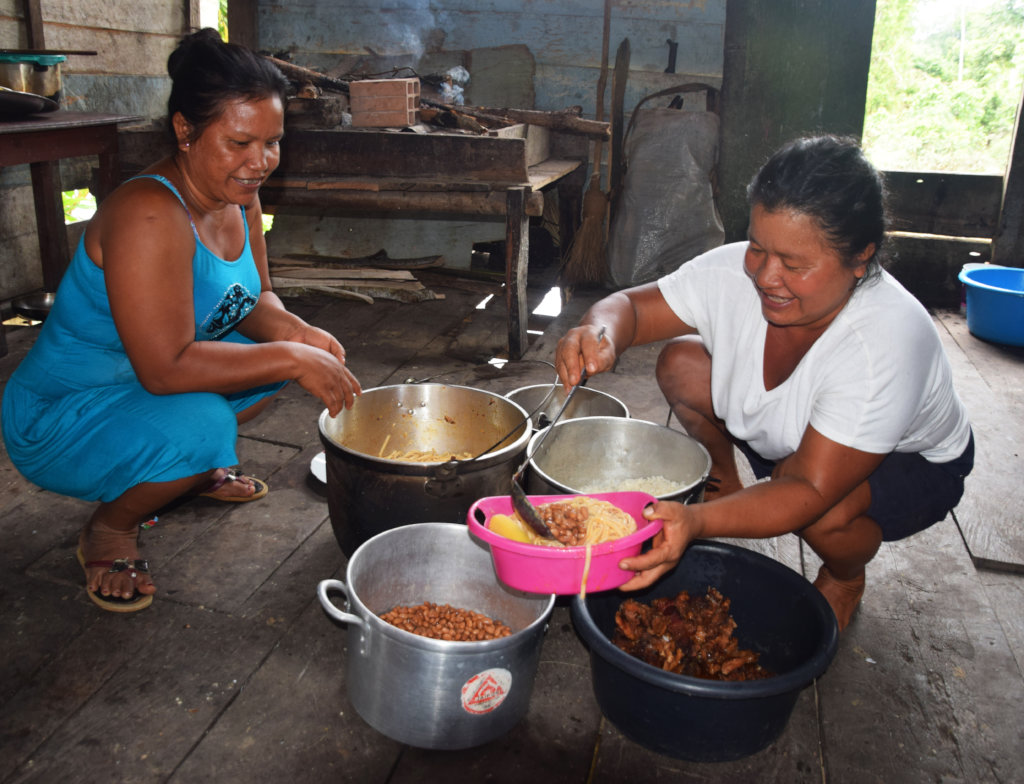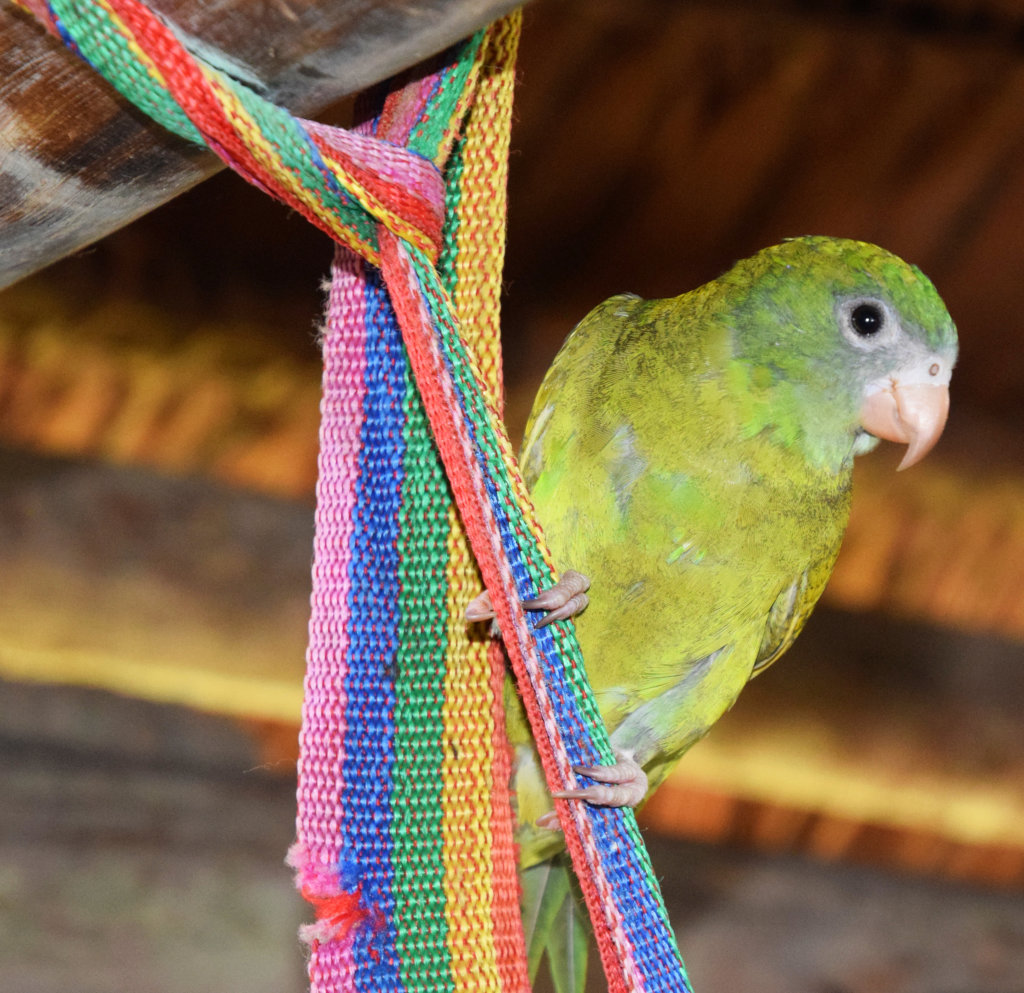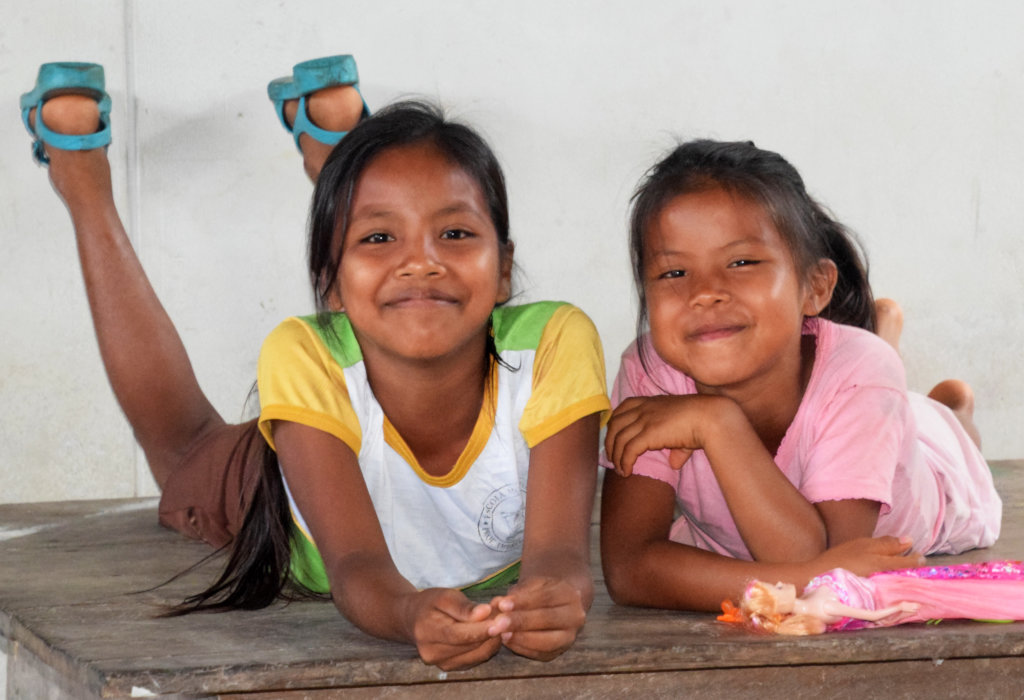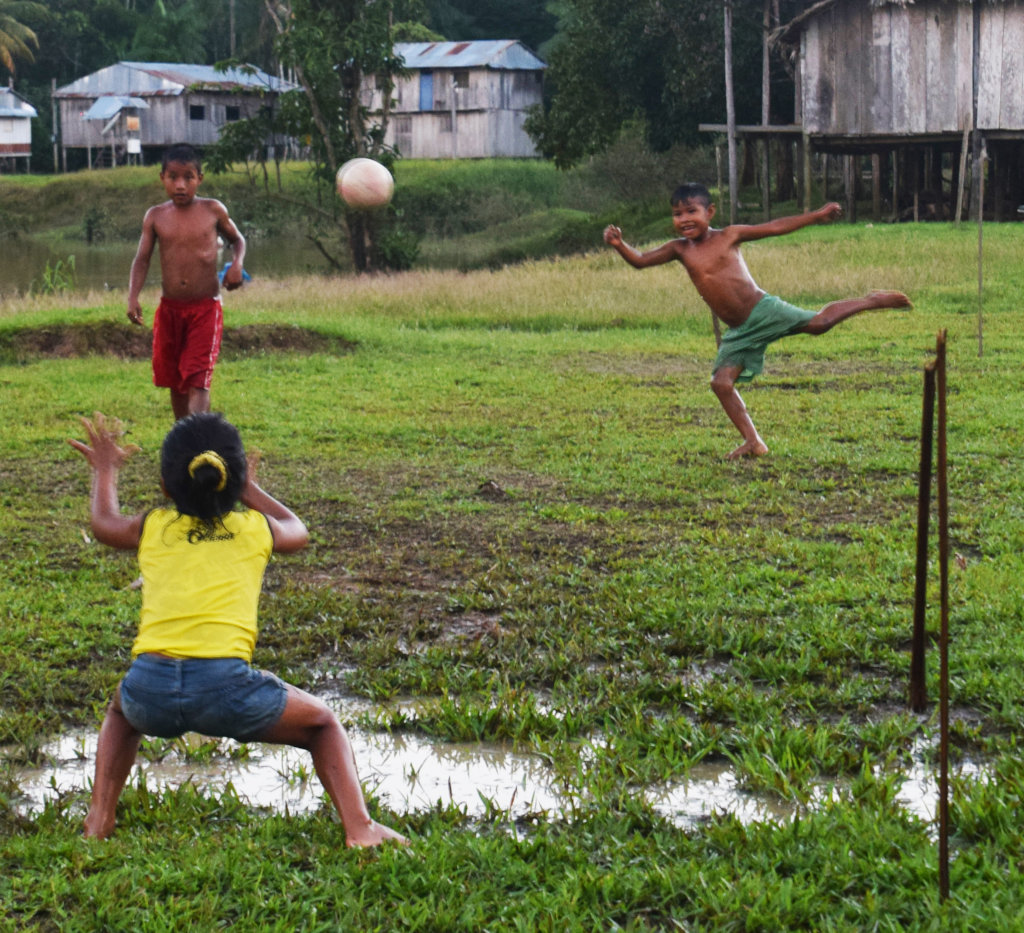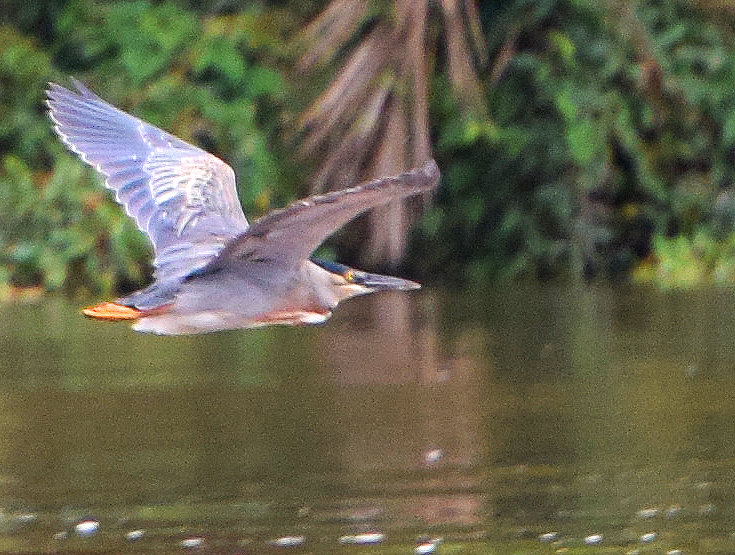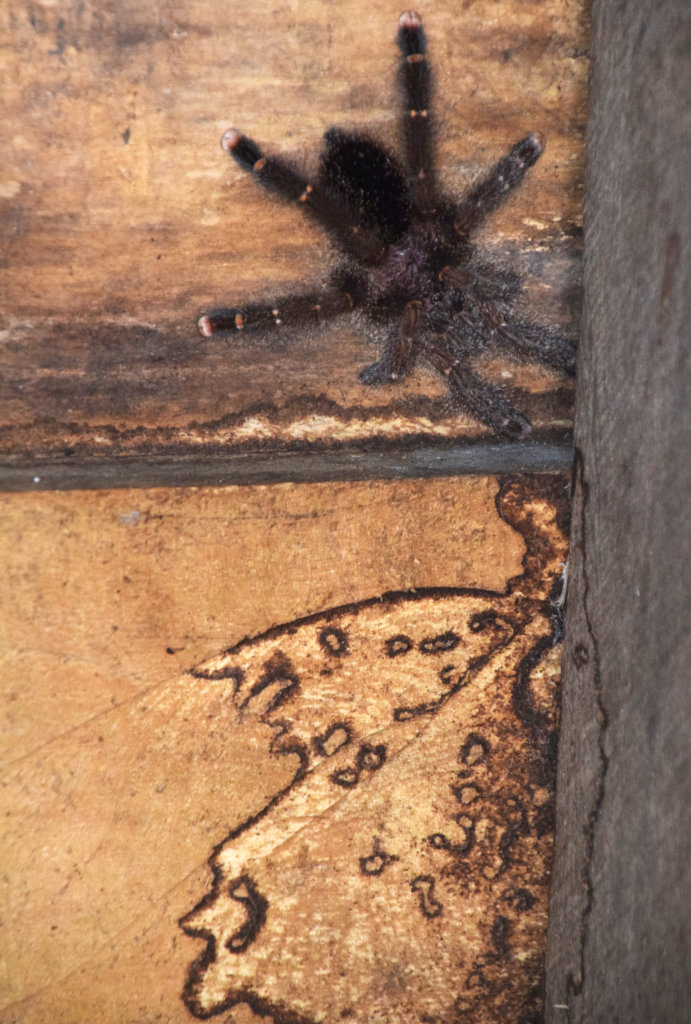By Campbell Plowden | Executive Director/Project Leader
This past February and March, CACE conducted three workshops in Nauta, Brillo Nuevo and Puca Urquillo to help our artisan partners address three main topics: how to work together to create a new product, how to make a product in quantity with consistent quality, and how to sell handicrafts more effectively to wholesale buyers and tourists.
We kicked off each workshop by splitting the participants into small groups and gave each one some construction paper, glue, tape, scissors, colored pencils and a ruler. The simple instruction was: “make a toucan any way you can.” This initially produced a lot of blank stares. A few artisans had woven birds with chambira palm fiber, but most of them had never made anything with these materials – much less a complicated three-dimensional figure.
The artisans set to work, however, with a jovial spirit, and just over an hour later everyone put their toucan on a long bench. The creations ranged from fat to flat, colorful to dull, precise to crude, and few could stand on their own. The artisans filed slowly by to inspect these individual efforts and carefully observed how any part of any bird was well made or had some attractive feature. The small groups then got back together to make one better toucan based on ideas they picked up from seeing the first attempts. They prepared a basic plan for toucan 2 and assigned each member a task. Someone would make the beak; others would make the head, the body, the tail, the legs, some adornment and/or put the whole thing together. Francisca from Amazonas expressed her feelings about the exercise well, “The first toucan I made by myself was terrible. I clearly didn’t know what I was doing, and I didn’t want to ask anyone for help. Our group’s bird was incredible the second time. We learned SO much from each other. I know now that we can apply this process to create any new product we want.”
As CACE has tried to standardize various types of handicrafts with our partners, sizes still vary widely sometimes even when we specify the dimensions. We learned one reason for these inconsistencies was that many artisans did not know how to measure things. So, we began the next part of the workshop by explaining the basic units and equivalencies of the metric (centimeters, meters, etc.) and American system (inches, feet, etc.). We reinforced the concept of dividing inches into halves, quarters and eighths with a game in which 2, 4, or 8 people needed to quickly come together to make one whole. We next defined length, width, height and diameter on objects with different shapes and then helped artisans use measuring tapes to record the dimensions of a box, a bottle, a roll of masking tape and a pair of scissors. Angelina from Brillo Nuevo told the group “It was really hard for me to do this exercise, but I really appreciated it. I feel confident now that I can make my belts and other crafts to the right size each time.”
The next step of helping the artisans make products with consistent design and size began by posting a drawing of a water bottle carrier with the dimensions of the woven pouch, the size and color of three stripes and the specs of the shoulder strap. Small groups were then asked to make four identical models with paper and other basic supplies. A few groups who had each person in their group make their own bottle carrier had predictable results – each model was very different. Most groups at least tried to work together where one person would do the measuring, someone else would do the cutting, while others worked on the strap or colored the stripes. No group in any of the three workshops completed all four carriers according to the specs, but after reviewing their initial efforts, each group came up with several ways they could work together more efficiently in a second try. Adela made a point that hit home for several artisans, “I’ve only been weaving for a few years so I’ve been shy about trying to make things with other artisans in my village. If we work together in this way, though, I can do something to help our group be more productive and complete bigger orders. I will get better watching others, and we will all get better with time.”
The next part of the workshop focused on teaching artisans how to classify and organize their crafts to sell them to wholesale buyers through a catalog or to tourists at fairs. All of the artisans first put all of the crafts they had with them on tables. We listed each of these crafts and other kinds that they or anyone else in their village made on a white board and then put each type of craft into a category. So earrings, bracelets and necklaces were grouped under jewelry; baskets, hot pads, and placemats were put into housewares, etc. After this brainstorm, we asked the group to place the crafts distributed randomly on the table with like crafts and categories next to similar categories. We noted the advantage of making crafts with multiple uses that fit into more than one category. One prime example for us is the small calabash pod etched with an Amazon animal with achira seeds inside which serves as a Christmas tree ornament as well as a hand rattle popular with musicians.
One of our most difficult tasks is telling an artisan who has spent days making a craft is that it isn’t good enough for us to buy. We have to do this, though, and tell them why so our partners can improve. They also need to do this quality control on their own to succeed with other buyers. To give the artisans practice with this task, we asked them to closely examine the crafts they had laid out on the tables, choose the best ones in each category and then explain why. We heard comments like: “Oh this, one has really precise edges,” “the knots are loose and uneven,” and “the colors on this one are faded.” It was encouraging that the artisans almost always chose or rejected the same ones we would have. This confirmed our suspicion that most artisans are well aware of the quality of their crafts. While some artisans don’t make high quality crafts because they haven’t learned to make them yet, experienced artisans sometimes rush to complete an order with the hope we will accept their work. While debriefing the exercise, Milda from Puca Urquilla said, “It’s hard to criticize the work of our fellow artisans, but we have to learn to do this in a constructive way. I know from experience that other buyers can be even more strict than CACE. It’s no good wasting our time and resources making crafts that large buyers won’t accept because they can’t sell them. We should develop a reputation as artisans who can be trusted to produce high quality crafts.”
Some of these exercises were challenging and intense so we separated them with interactive games. A few favorites borrowed from our Alternatives to Violence Project workshops were Armadillos and Holes (adapted from Landlords and Tenants) and Crocodiles and Frogs. Both required people to move around quickly and cooperate in some way and produced lots of laughter.
In two of the workshops, we did a session on photographing handicrafts so they could learn to help market their own work. We first set up cloths on tables to provide a solid color background below and behind a craft. CACE staff member Tulio then explained the basics steps for taking a good picture. Each artisan took a turn using one of our cameras or one on their phone to shoot one of the selected handicrafts. Tulio later compiled the photos on his computer and showed the group examples of shots which were in or out of focus, had good or poor lighting, or presented the craft in a good or not so good angle. Eliza from the village of San Francisco said, “I was very timid about doing this because I didn’t want to break the camera. Every time I pushed the button, the camera seemed to lurch, and the photo was blurry. I finally relaxed, though, and did it OK. I was proud to take a good picture of my woven turtles and discover that my son isn’t the only one in the family who can learn to use some technology.”
The next stage of the two-day workshop was helping the artisans start to make a catalog of their crafts. This began by explaining a product description that explained a bit about the artisan or artisan group, where they lived, what materials they used to make it, its size, its use, and their cost for retail and wholesale buyers. Small groups were asked to prepare a description of one or two products that mentioned these points and anything interesting about the craft’s cultural significance or animal depicted in the craft. In mixed-age groups, the elders usually talked while younger ones did the measuring and wrote responses. They then shared these descriptions with the full group to get their feedback and suggestions. One tough part of this exercise for the artisans was figuring out how much of a discount they could give to wholesale buyers who wanted many crafts of the same kind. When they make crafts one at a time by themselves, there are limited ways to improve their efficiency. They realized, though, that they could gain some economy of scale if they worked together to fulfill a large order.
We finally shifted to tips for marketing crafts to tourists. Some artisans had already had some experience doing, but was mostly new for artisans from more remote villages. Each small group was given a stand with a cloth, a batch of crafts, a big paper and some markers. They were asked to lay out their crafts in an attractive way and prepare a sign with the name of their artisan group and some phrase about themselves or their crafts. We did one review first to suggest ways to improve the presentation of their crafts or sign. After these adjustments, our facilitation team took on the role of tourists visiting their fair. Our Peruvian members asked questions in Spanish and tried to haggle with the artisans about prices. I pretended to be an American tourist who was a bit rude and spoke nothing but English. Milly from Puca Urquillo commented, “Wow, that was amazing, fun and hard. This was the first time I really had to explain everything about my craft.” Ofelia added, “It’s true that many visitors only speak a few words in Spanish, and it can be frustrating for all of us. We want you to teach us some simple English when you come back so we can communicate with them a little bit better.” I said I would.
We ended every workshop by asking artisans to answer a few questions in a written evaluation, and we helped the ones who had trouble reading and writing. The overall comments about the workshop were very positive, although there were sometimes mixed reviews about the food served during meal times. Other feedback helped us make our explanations of difficult concepts more clear and dynamic from the first to the third workshop and identify other topics the artisans want to learn about or practice more in the future.
There are many ways to build a better toucan, and we’re learning new ones all the time.
Links:
By Tulio Davila (and Campbell Plowden) | Project Media Manager (and CACE Project Leader)
By Campbell Plowden | Project Leader - Executive Director
Project reports on GlobalGiving are posted directly to globalgiving.org by Project Leaders as they are completed, generally every 3-4 months. To protect the integrity of these documents, GlobalGiving does not alter them; therefore you may find some language or formatting issues.
If you donate to this project or have donated to this project, you can recieve an email when this project posts a report. You can also subscribe for reports without donating.
Support this important cause by creating a personalized fundraising page.
Start a Fundraiser
